Sample information |
|
| Picture |
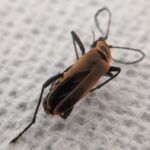
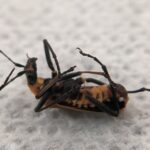
|
|---|---|
| Location | |
| Collection date | 08/30/2020 |
| Captive / Cultivated? | Wild-caught |
| Group | Bordenstein Lab |
| Observations | This milkweed bug is likely a nymph as it doesn’t look fully developed and was unable to fly. It was collected directly from a milkweed plant in an open field. A collection vial was quickly placed over top and immediately capped with a lid. The bug was then carefully tapped into a tube of 70% ethanol. There were also oleander aphids and small ants on the same plant. |
| Putative identification | Arthropoda Insecta Hemiptera Lygaeidae Oncopeltus Oncopeltus fasciatus |
Methods |
|
| Extraction kit | DNeasy (Qiagen) |
| DNA extraction location | Partial abdomen |
| Single or Duplex PCR | |
| Gel electrophoresis system | MiniOne |
| Buffer | TBE |
| DNA stain | GelGreen |
| Gel images |
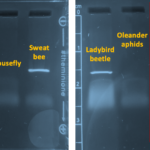
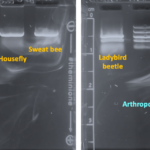
|
| Protocol notes | The milkweed bug was stored in 70% ethanol for about 3 weeks prior to DNA extraction. DNA Extraction: DNA was extracted from very tip of abdomen (about 1/3). The specimen was incubated in lysis buffer at 56C for 2 hours. Because there was cell debris, I did a 30 sec spin and transferred the supernatant to a fresh tube of 200ul ethanol. This was placed in the freezer overnight and purified the following day. Eluted DNA was immediately incubated at 65C for one hour prior to PCR. PCR: MiniOne Taq polymerase was used. Gel electrophoresis: The arthropod gel looks whispy; however, that went away as the gel ran longer. This could have been caused by not adding loading dye to samples. The results were very clear, though. I re-colored the gel images in PowerPoint. The MiniOne ladder contains 5 bands: 100, 300, 500, 1000, and 2000 bp. |
Results |
|
| Wolbachia presence | No |
| Confidence level | Medium |
| Explanation of confidence level | The DNA extraction was successful because the arthropod COI amplified. Both (+) and (-) controls worked. The Wolbachia 16S rRNA band was absent. My confidence level is medium because I only dissected the posterior 1/3 end of the abdomen and am unsure if I captured the reproductive tissue. While it is likely uninfected, I would like to repeat with the rest of the abdomen for confirmation. Could milkweed toxicity impact symbionts? I did not Sanger sequence the arthropod DNA due to non-specific binding. |
| Wolbachia 16S sequence | |
| Arthropod COI sequence |
|
| Summary | The Oncopeltus fasciatus was found to be negative for Wolbachia. |
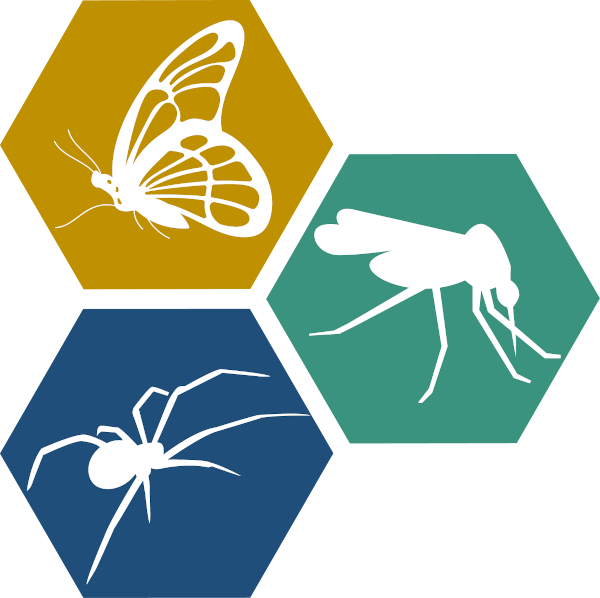 European Paper Wasp
European Paper Wasp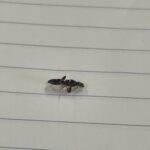 Woodworm Ant
Woodworm Ant